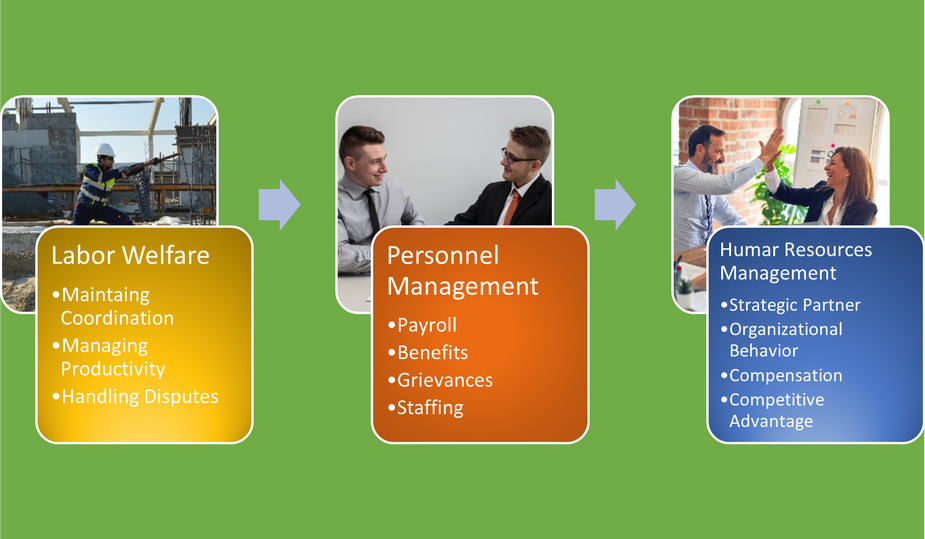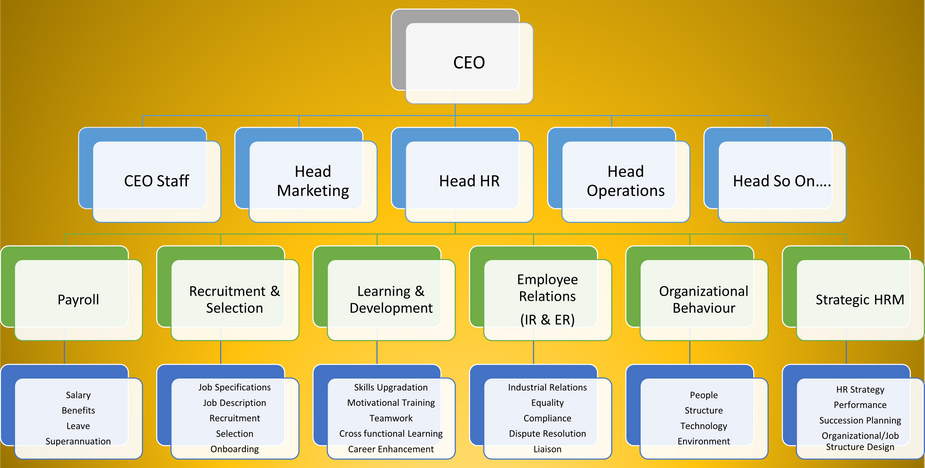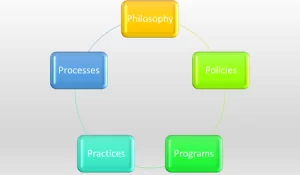Introduction to Human Resources Management

Human Resource Management (HRM), as the name suggests, manages and nurtures the most significant resource of an organization, i.e. Human Beings. Time and again, humans have proved their superiority and irreplaceability to machines. It is due to this reason, that after having tried in vein to replace humans at workplace, the corporate world has come back to realize the importance of human resources. Never before has so much emphasis been laid on the effective management of HR than now. Consequently, HRM has taken the centerstage in the functioning of an organization.
HRM ensures smooth functioning of an organization and catalyzes better performance & results by optimal utilization of its human resources. Human resources are one of the most cost-centric resources and if not managed well, can lead to wasted money and lost opportunities.
Evolution of HR
Frederick Winslow Taylor (1856-1915, an American Engineer, also called The Father of Scientific Management), conducted Time and Motion Studies to find out the most productive and efficient ways of doing work at a manufacturing facility. These studies proved that if managed and trained properly, human beings can produce extraordinary results. Time and motion studies and their eventual implementation improved productivity and profitability across industries. This had mixed reactions, with trade unions demanding a share of the enhanced profitability, and it sparked the rise of modern HRM. Present day HRM is a very recent development though, beginning from the eighties of the twentieth century. Here are the various stages, HRM has gone through to become what it is in its present form.

Labor Welfare – Post adoption of the findings of time and motion studies, disputes started arising between the labor unions and the managements over sharing of the proceeds of the enhanced productivity. These disputes lead to extreme polarization between the trade unions and the managements and consequently, in order to reestablish harmony, labor welfare function was created. Labor welfare department would strive to create harmony between trade unions and the managements and kept the communication channels open.
Personnel Management – This stage identified the ‘personnel’ as an important component in the functioning and success of an organization and the need was felt to coordinate this function better. Documentation, statutory compliances, grievances, compensation & benefits, recruitment & training were some of the activities that this newly created function was tasked with. However the strategic importance of the human resources was still not recognized at this stage.
Human Resources Management -It is only around 1980s that organizations started recognizing the strategic importance of HR in achieving its objectives. Human Resource Management (HRM) is relatively a recent term considered for managing human resources in an organization. HRM is still evolving to become an amalgam of organizational behavior, personnel management, industrial relations and labor legislation.
Functions of HRM

- Staffing – The most basic function of HRM is staffing. This includes, acquiring, maintaining and retaining talent. The staffing function ensures the availability of appropriate human resources at all times.
- Compensation & Benefits – Often seen as hygiene factors, compensation & benefits management is critical to the success of any organization.
- Motivation – Recognizing the peculiar nature of HR, it is upon HRM to identify the right motivators and apply them across the workforce to ensure the motivation of employees. It may be noted that money or material benefits are not the only motivators. Rewards & Recognition Schemes hold equal importance in keeping the workforce motivated.
- Learning & Development – Overall development of the employees w.r.t enhancing their professional skills is important to both, the organization and the employees. Besides skills, will issues (attitude related issues) are also addressed by the HRM within their L&D function.
- Industrial Relations – Industrial Relations or IR, as it is popularly known, still holds a lot of importance in labor intensive industries such as manufacturing and infrastructure projects. As a result, there are bound to be labor management & trade union related issues. IR specialists address these issues and maintain a cordial working environment within the organization.
- Organizational Behavior – The collective behavior of the organization is important component towards the image of an organization. OB tries to influence how all the stakeholders perceive a company and form an opinion about it.
- Grievance Redressal – HRM is the go to department for any grievances employees might have. These can be both professional and personal in nature. HRM will take note of any grievances brought to their notice, try to resolve them or at least, provide counselling and support to address the issues causing grievances.
- Strategic Partnering – HRM is an important partner in formulating and implementing corporate strategies. Strategies are designed by people and implemented by people and HRM provides the most important component of a strategy, i.e. human resources. HRM creates a competitive advantage for a firm through its value adding activities.
- Compliances – There are a lot of statutory compliances when it comes to dealing with people. Regulations regarding workplace safety, gender sensitivity, policies for differently-abled employees, prevention of discrimination at workplace, transparency and provision of equal opportunities are just a few to mention. HRM has ensure compliance to all such statutory and voluntary compliances to protect, preserve and enhance the organizational image.
Role of an HR Manager
- Advisory Role – One of the major roles of an HR manager is, to advise the top management in the matters relating to management and development of human resource, in order to achieve organizational objects. Looking to the company’s vision, mission and long range planning, HR executive advises the higher management to formulate appropriate HR policies, procedures which may create a perceptible change in the minds of the workers’ to help the transformational process of dynamism.
- Functional Role – HR manager plays an important role to execute the policies, programs, decisions. Formulation and execution tasks are interwoven and equally important for achievement of organizational goals. HR manager acts as an executor of the policy decisions in the company, for smooth functioning and effectiveness of the organization.
- Personnel Role – An HR Manager is responsible for maintaining HR records and documentation. Manage and maintain personnel files and keep them updated with the latest entries. Ensure regular and timely payout of benefits and appraisals. In his personnel role, the HR manager is also tasked with attending to small grievances and disputes and resolve them amicably.
- Mediator Role – HR manager works as a link personality between trade unions and top management in order to eliminate the differences of opinions cropped up in process of settlement of disputes. He takes initiative to sort out problems through collective bargaining/ bipartite negotiation process.
Additional Reading – Role of an HR Manager In An Organization
Strategic HRM – The New Paradigm
- Strategic Human Resource Management (SHRM) is an approach where the HRM function of an organization is woven into the organizational objectives and strategies.
- Consequently, in SHRM, the HR does not function in isolation but coordinates and cooperates with all other stakeholders of the organization to ensure smooth functioning and achievement of objectives.
- SHRM strives to create competitive advantage for an organization by creating an effective organizational structure and design, culture, employee-value proposition, systems thinking, an appropriate communication strategy and preparing an organization for a changing landscape, which includes downturns and mergers & acquisitions.
- In an organization, SHRM means accepting and involving the HR function as a strategic partner in the formulation and implementation of the company’s strategies through HR activities such as recruiting, selecting, training and rewarding personnel.
5 Ps Model of SHRM – Randall S. Schuler
Proposed by Randall Schuler, Professor Emeritus, Michigan State University in 2012, this model highlights five areas of activity that HRM function must focus upon in order to remain in sync with the overall corporate strategy. If this harmony is achieved, then HRM transforms from being a basic people management function to a frontline contributor towards accomplishment of the organizational objectives. These areas are:
- Philosophy – The approach of HRM towards people and the will to be a forward looking function, actively contributing towards corporate strategy.
- Policies – Guidelines for action on HR related issues and programs, in line with the overall business objectives.
- Programs – Efforts and initiatives planned and executed by HR to align the people function with the organizational goals.
- Practices – Actions and activities undertaken, both as routine and non routine, to remain committed to the organization’s pace and direction of heading.
- Process – Creating processes that encourage alignment of HR practices and policies towards HR philosophy and strategic intent of the business.
The Paradigm Shift From Traditional HR
As opposed to simply being an employee management function, HRM in the recent times has moved ahead towards strategic partnering with other functions organization. Today HR managers are a part of the corporate strategy formulation and they understand the organizational objectives like any other function does. The transition from traditional HRM to SHRM has brought about the following metamorphosis in the functioning of HRM.
- Reactive to Proactive – In most organizations, the functional of HR has transforming from being a backend service provider to a proactive contributor towards organizational goals. It no longer does what is expected but identifies what needs to be done to help the organization reach its objectives.
- Role – HRM now actively involves itself in formulating and implementing the corporate strategy, thus assuming the role of an important stakeholder in the company’s functioning and growth.
- Human Capital – There are two ways of looking at a company’s employees. Either you consider them as a cost to the company or as a capital asset. The returns from human resources depend upon the way you look at them. If you consider them only as cost, that is what they will remain as. If you look at them as assets, that is what they will turn out to be.
- Perspective – From just managing day-to-day activities, SHRM has come a long way and it now has a much wider and longer perspective. Such a perspective allows SHRM to look at the long-term horizon and be future ready.
- Approach – The HRM function has shed its bureaucratic style of functioning. It is more approachable now, rather it itself reaches out to people ( as a part of its proactive approach). This new approach creates a collaborative environment that promotes creativity, initiative, and productivity.
It is worthwhile to note that HRM has metamorphosed from being an ‘efficient’ department to an ‘effective’ department, doing ‘right things’ rather than just doing ‘things right’!!!!
Also Read – Job Analysis, Job Design & Human Resources Planning









